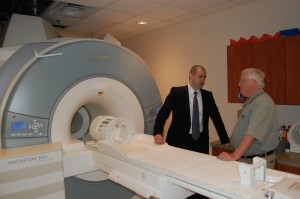How you vaccinate helps determine how you protect. This idea lies behind many researchers’ interest in mucosal vaccines. How a vaccine is administered (orally/nasally vs intramuscular, for example) could make a difference later, when the immune system faces the bad guys the vaccine is supposed to strengthen defenses against.

How does the route of immunization affect the quality of immunity later on? For example, is a nasal spray best when trying to prevent respiratory infections?
A recent paper from Emory Vaccine Center director Rafi Ahmed’s laboratory challenges this idea. The paper was published in the Journal of Immunology. Scott Mueller, now an Australian Research Council research fellow at the University of Melbourne, is first author.
Memory T cells are a key part of a response to a vaccine, because they stick around after an infection, enabling the immune system to fight an invading virus more quickly and strongly the second time around. In the paper, the Emory team compared memory T cells that form in mice after they are infected in the respiratory system by a flu virus or throughout their bodies by a virus that causes meningitis (lymphocytic choriomeningitis virus or LCMV).
The authors engineered a flu virus to carry a tiny bit of LCMV (an epitope, in immunological terms) so that they could compare apples to apples by measuring the same kind of T cells. They found that memory T cells generated after a flu infection are weaker, in that they proliferate and stimulate other immune cells less, than after a LCMV infection. This goes against the idea that after a respiratory infection, the immune system will be better able to face a challenge in the respiratory system.









